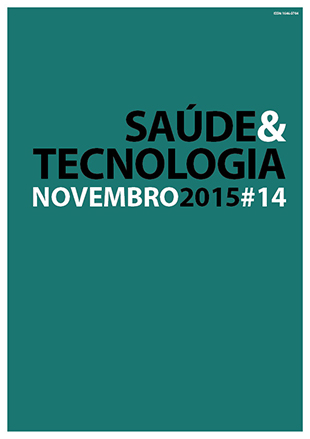Visual acuity analysis on the phakic lenses implantation in high myopia
DOI:
https://doi.org/10.25758/set.1224Keywords:
Visual acuity, Intraocular lenses implantation, Implantable Collamer lens, Refractive surgeryAbstract
Introduction – Intraocular phakic lens implantation surgery has been progressively preferred to laser surgery in the treatment of high myopia. Visual acuity (AV) pre and post-refractive implant surgery have been compared, showing that this method is more effective in the improvement of vision in high myopia. Methods – Seventy eyes belonging to 41 patients with high myopia were analyzed retrospectively. The age of the patients ranged from 20 to 50 years and they all had refractive implant surgery between 2009 and 2012. Results – One-day post-surgery, 42.86% of the sample had an improvement in visual acuity, 34.29% remained unchanged and 22.85% worsened. A generalized increase in the quality of vision was observed after 30 days. 64.29% scored 10/10 in visual acuity, 24.29% scored between 7/10 and 9/10, and 11.42% between 4/10 and 6/10. Conclusion – The effectiveness of this surgical technique was proved, showing an improvement in visual acuity in 52.86% of the sample.
Downloads
References
Valldeperas Belmonte X. Qualitat visual dels pacients amb implantació de lent fàquica tipus ILCTM per a la correcció de la miopia [Dissertation]. Barcelona: Facultat de Medicina, Universitat Autònoma de Barcelona; 2004.
Pérez-Cambrodí RJ, Piñero DP, Madrid-Costa D, Blanes-Mompó FJ, Ferrer-Blasco T, Cerviño A. Medium-term visual, refractive, and intraocular stability after implantation of a posterior chamber phakic intraocular lens to correct moderate to high myopia. J Cataract Refract Surg. 2011;37(10):1791-8.
Ghoreishi M, Masjedi A, Nasrollahi K, Rahgozar A, Jenab K, Fesharaki H. Artiflex versus STAAR implantable contact lenses for correction of high myopia. Oman J Ophthalmol. 2011;4(3):116-9.
Nanavaty MA, Spalton DJ, Gala KB. Fellow-eye comparison of 2 aspheric microincision intraocular lenses and effect of asphericity on visual performance. J Cataract Refract Surg. 2012;38(4):625-32.
Shah S, Shah Y. Implants in ophthalmology. New Delhi: All India Ophthalmological Society; 2008.
Ruiz Rodríguez Y, Hernández Silva JR, Curbelo Cunill L, Fernández Vázquez G, Capote Cabrera A, Río Torres M. Lentes fáquicas Artisan/Artiflex en la corrección de la alta miopía [Artisan/Artiflex phakic lens for high myopia correction]. Rev Cubana Oftalmol. 2009;22(Suppl 1):22-9. Spanish
Rostron C. Artiflex lens [Internet]. London: www.chadrostron.co.uk/; 2010 [cited 2012 Mar 16]. Available from: http://www.chadrostron.co.uk
Gonvers M, Othenin-Girard P, Bornet C, Sickenberg M. Implantable contact lens for moderate to high myopia: short-term follow-up of 2 models. J Cataract Refract Surg. 2001;27(3):380-8.
Guimarães RQ, Castro RD, Navarro MP, Guimarães MR. Lente fácica de câmara posterior para correção da miopia [Posterior chamber phakic lens for the correction of myopia]. Arq Bras Oftalmol. 2001;64(1):21-6. Portuguese
Peris-Martínez C, Artigas JM, Sánchez-Cortina I, Felipe A, Díez-Ajenjo A, Menezo JL. Influence of optic quality on contrast sensitivity and visual acuity in eyes with a rigid or flexible phakic intraocular lens. J Cataract Refract Surg. 2009;35(11):1911-7.
Ruckhofer J, Seyeddain O, Dexl AK, Grabner G, Stoiber J. Correction of myopic astigmatism with a foldable iris-claw toric phakic intraocular lens: short-term follow-up. J Cataract Refract Surg. 2012;38(4):582-8.
Alfonso JF, Baamonde B, Fernández-Vega L, Fernandes P, González-Méijome JM, Montés-Micó R. J Cataract Refract Surg. 2011;37(5):873-80.
Chua WH, Yuen LH, Chua J, The G, Hill WE. Matched comparison of rotational stability of 1-piece acrylic and plate-haptic silicone toric. J Cataract Refract Surg. 2012;38(4):620-4.
Hecht E. Óptica. Lisboa: Fundação Calouste Gulbenkian; 2002. ISBN 9789723109672
Downloads
Published
Issue
Section
License
Copyright (c) 2022 Saúde e Tecnologia

This work is licensed under a Creative Commons Attribution-NonCommercial-NoDerivatives 4.0 International License.
The journal Saúde & Tecnologia offers immediate free access to its content, following the principle that making scientific knowledge available to the public free of charge provides greater worldwide democratization of knowledge.
The journal Saúde & Tecnologia does not charge authors any submission or article processing charges (APC).
All content is licensed under a Creative Commons CC-BY-NC-ND license. Authors have the right to: reproduce their work in physical or digital form for personal, professional, or teaching use, but not for commercial use (including the sale of the right to access the article); deposit on their website, that of their institution or in a repository an exact copy in electronic format of the article published by Saúde & Tecnologia, provided that reference is made to its publication in Saúde & Tecnologia and its content (including symbols identifying the journal) is not altered; publish in a book of which they are authors or editors the total or partial content of the manuscript, provided that reference is made to its publication in Saúde & Tecnologia.







